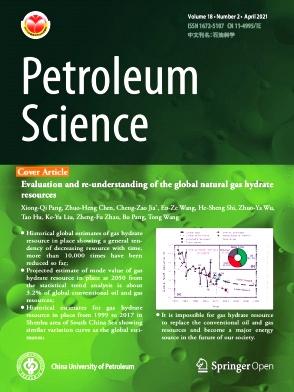Research on multi-wave joint elastic modulus inversion based on improved quantum particle swarm optimization
IF 6
1区 工程技术
Q2 ENERGY & FUELS
引用次数: 0
Abstract
Young's modulus and Poisson's ratio are crucial parameters for reservoir characterization and rock brittleness evaluation. Conventional methods often rely on indirect computation or approximations of the Zoeppritz equations to estimate Young's modulus, which can introduce cumulative errors and reduce the accuracy of inversion results. To address these issues, this paper introduces the analytical solution of the Zoeppritz equation into the inversion process. The equation is re-derived and expressed in terms of Young's modulus, Poisson's ratio, and density. Within the Bayesian framework, we construct an objective function for the joint inversion of PP and PS waves. Traditional gradient-based algorithms often suffer from low precision and the computational complexity. In this study, we address limitations of conventional approaches related to low precision and complicated code by using Circle chaotic mapping, Lévy flights, and Gaussian mutation to optimize the quantum particle swarm optimization (QPSO), named improved quantum particle swarm optimization (IQPSO). The IQPSO demonstrates superior global optimization capabilities. We test the proposed inversion method with both synthetic and field data. The test results demonstrate the proposed method's feasibility and effectiveness, indicating an improvement in inversion accuracy over traditional methods.
求助全文
约1分钟内获得全文
求助全文
来源期刊

Petroleum Science
地学-地球化学与地球物理
CiteScore
7.70
自引率
16.10%
发文量
311
审稿时长
63 days
期刊介绍:
Petroleum Science is the only English journal in China on petroleum science and technology that is intended for professionals engaged in petroleum science research and technical applications all over the world, as well as the managerial personnel of oil companies. It covers petroleum geology, petroleum geophysics, petroleum engineering, petrochemistry & chemical engineering, petroleum mechanics, and economic management. It aims to introduce the latest results in oil industry research in China, promote cooperation in petroleum science research between China and the rest of the world, and build a bridge for scientific communication between China and the world.
 求助内容:
求助内容: 应助结果提醒方式:
应助结果提醒方式:


